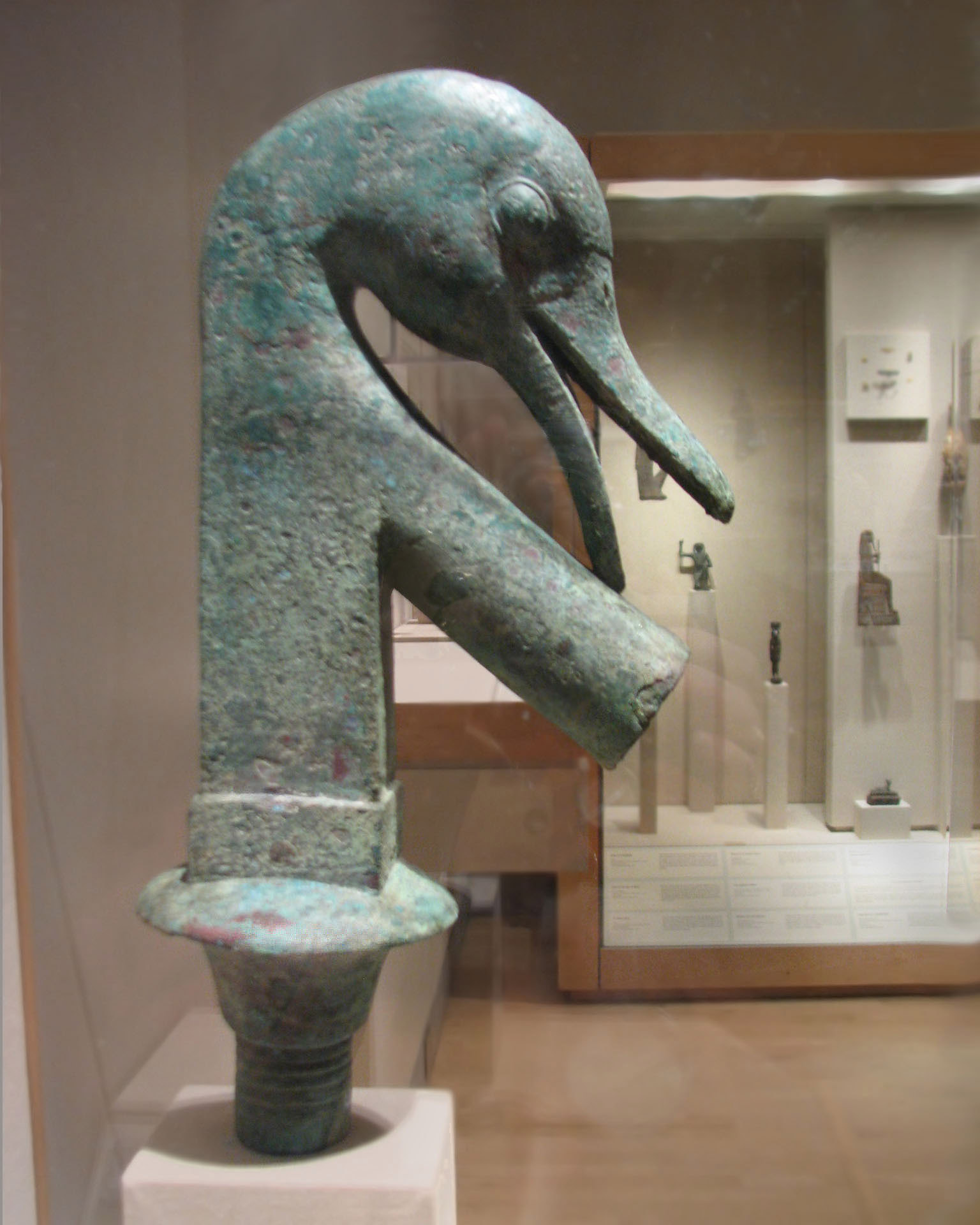
Furniture Fragment
Bronze, 12 5/8 x 6 5/8 in. (32.1 x 16.8 cm)
Perhaps Ptolemaic Period, ca. 1938-1539 B.C.E.
Provenance not known
Brooklyn #54.101, Charles Edwin Wilbour Fund
Photo © Joan Lansberry, May 2008-2016
|
(from the info card) "That this finial or ornament belonged to an item of furniture is clear from the elaborate fittings, but both the identity of the original complete object and the exact symbolism of the duck or goose head remain unknown. Both types of fowl had sexual associations. Whatever its significance, the finial is apparently unique. Its fastidious modeling is characteristic of the Ptolemaic Period." It is more likely is a goose head, for which there is some idea of its symbolism, as Mysliwiec and Packer explain:
"In one of the texts of the Late Period, the Metternich Stele, Isis is referred to as the 'goose's egg' - the goose being the sacred animal of Geb.
Although Geb is represented in the iconography as a man from whose body sometimes water is spouting, or wheat and other plants are growing, these representations do not identify him as a fertility god but rather as a chthonic god. Geb was, above all, the earth god, and his name is associated, both in meaning and sound, with an Egyptian word for earth, gbb. Geb also played an important role in beliefs relating to the afterworld. The deceased wished to come out of the earth via the 'gateway' of either the mouth or the jaws of Geb, and when Geb spoke, the earth, or its mouth, opened. Because Geb was regarded as the personification of the earth, he was the first of the earthly rulers, as indicated by inscriptions that describe the kingdom of the pharoahs, and which often contain allusions to the 'throne of Geb' and his 'heritage'."
from _Eros on the Nile_ by Karol Mysliwiec and Geoffrey L. Packer, page 25
If this fragment came from a throne, it would be then referring to the 'throne of Geb'.
|


